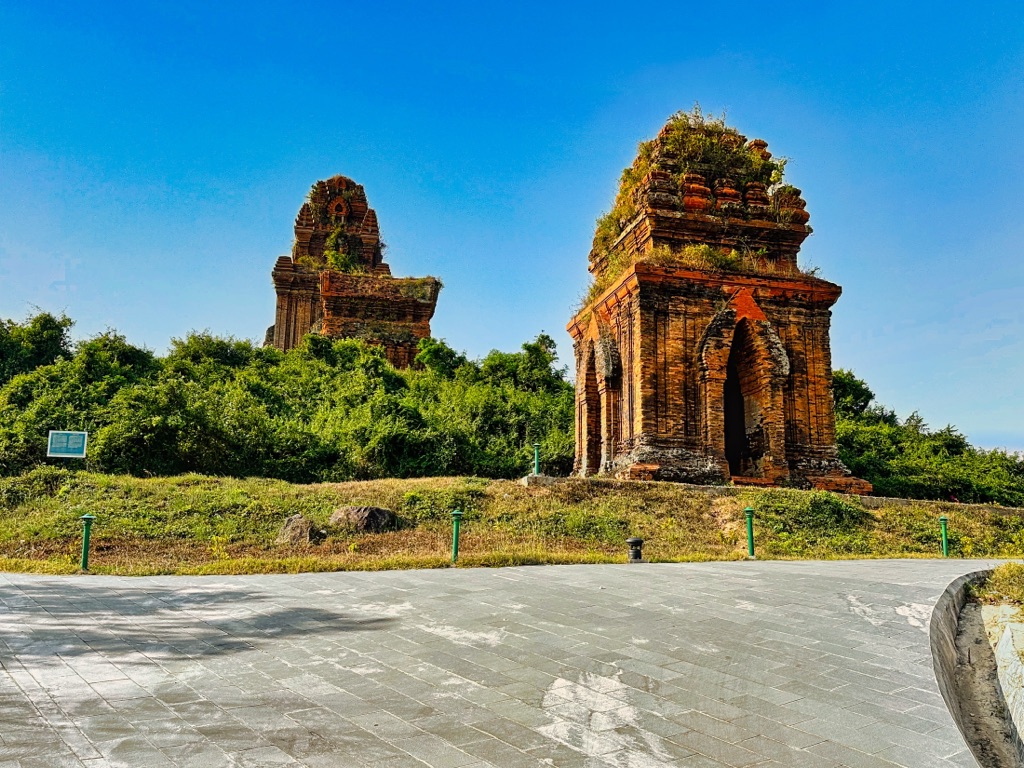The Banh It Towers are a striking example of Cham architecture in Central Vietnam. These ancient Hindu temples date back to the Champa Kingdom, which flourished between the 7th and 15th centuries. Perched on a hill in Binh Dinh Province, the towers offer a glimpse into the spiritual and cultural life of the Cham people. The site consists of several towers, each serving a distinct religious purpose, and is renowned for its intricate brickwork and carvings.
Get your dose of History via Email
Historical Background of Banh It Towers
The Banh It Towers were built during the reign of the Champa Kingdom, a civilization influenced by Hinduism. The exact date of construction is not pinpointed, but it is believed to be around the 11th century. French archaeologists discovered the site in the late 19th century, bringing it to international attention. The Cham people, known for their seafaring and trading prowess, constructed these towers as a place of worship.
King Bhadravarman is often credited with initiating the construction of the towers. Over time, the site has seen various modifications and enhancements. After the decline of the Champa Kingdom, the towers were abandoned and fell into disrepair. They were not the scene of any significant historical events but remained a testament to the Cham civilization’s architectural ingenuity.
Local legends and historical records suggest that the towers were part of a larger complex. However, many structures have not survived the test of time. The Banh It Towers were a central element in the religious life of the Cham people, dedicated to Hindu deities. The site’s location on a hilltop also indicates its importance, as it overlooks the surrounding countryside.
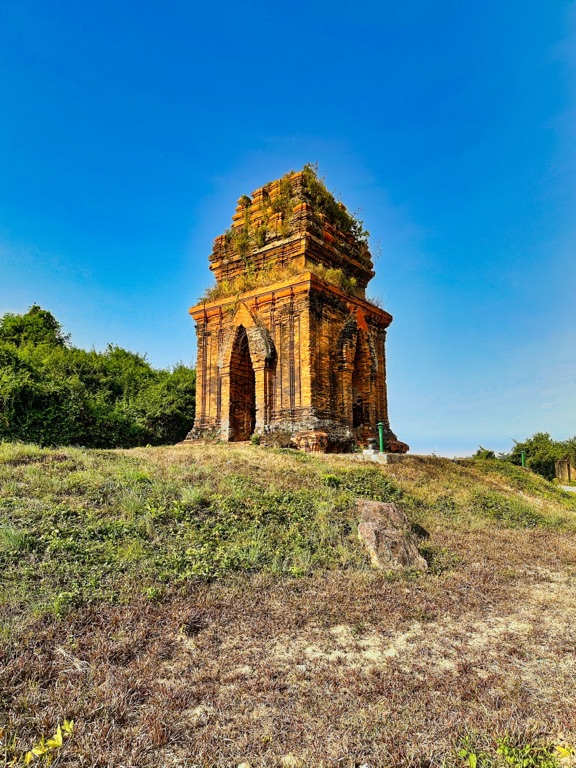
In the following centuries, the towers were not inhabited but occasionally visited by locals for worship and ceremonies. The site’s remote location helped preserve its structures from the ravages of war and urban development. Today, the Banh It Towers are a popular tourist destination and a symbol of the Champa Kingdom’s enduring legacy.
The significance of the Banh It Towers was recognized by the Vietnamese government, and efforts to preserve the site began in the 20th century. The towers have since undergone several restoration projects to stabilize the structures and prevent further decay. They stand as a proud reminder of Vietnam’s rich cultural heritage and the diverse history of the region.
About Banh It Towers
The Banh It Towers are a complex of four main towers, each with a unique architectural style. The tallest tower, known as the main tower, is approximately 22 meters high. The towers are constructed primarily of red brick, with sandstone used for decorative elements and carvings. The brickwork is noted for its precision and the absence of visible mortar, a hallmark of Cham construction techniques.
The main tower features a pyramidal roof, which is characteristic of Cham architecture. The interior of the towers contains remnants of altars and sculptures, although many have been lost or damaged over time. Intricate carvings depicting Hindu deities and motifs adorn the towers’ exteriors, showcasing the Cham artisans’ skill.
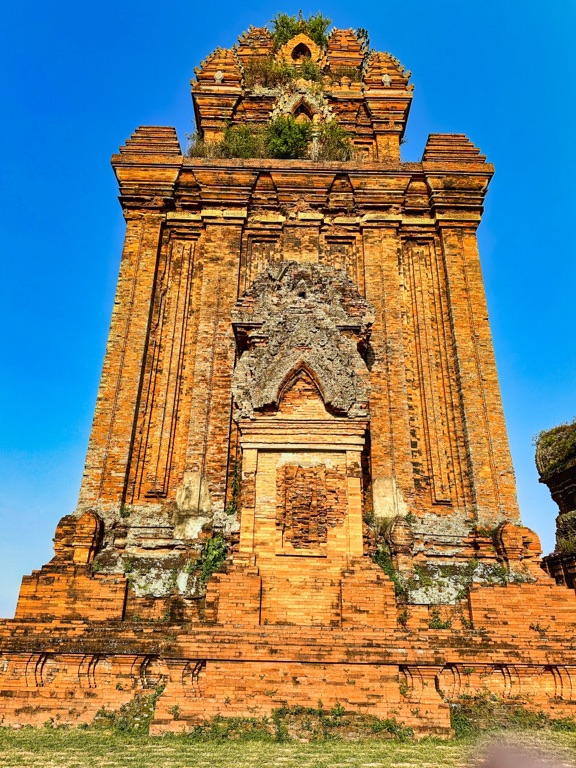
The layout of the towers follows a typical Cham design, with the main tower surrounded by smaller auxiliary towers. Each tower served a specific religious function, with the main tower likely housing the most sacred shrine. The towers’ doorways face east, aligning with the rising sun, which is significant in Hindu rituals.
The construction methods of the Banh It Towers remain a subject of study. The bricks were laid without the use of mortar, and it is believed that a resin or vegetable compound was used to bind them. The precision of the brickwork suggests a high level of craftsmanship and knowledge of materials.
The architectural highlights of the Banh It Towers include the false doors, which are common in Cham temples. These doors are purely decorative and do not lead to any interior spaces. The towers also feature a series of pilasters and columns, which add to the structural integrity and aesthetic appeal of the complex.
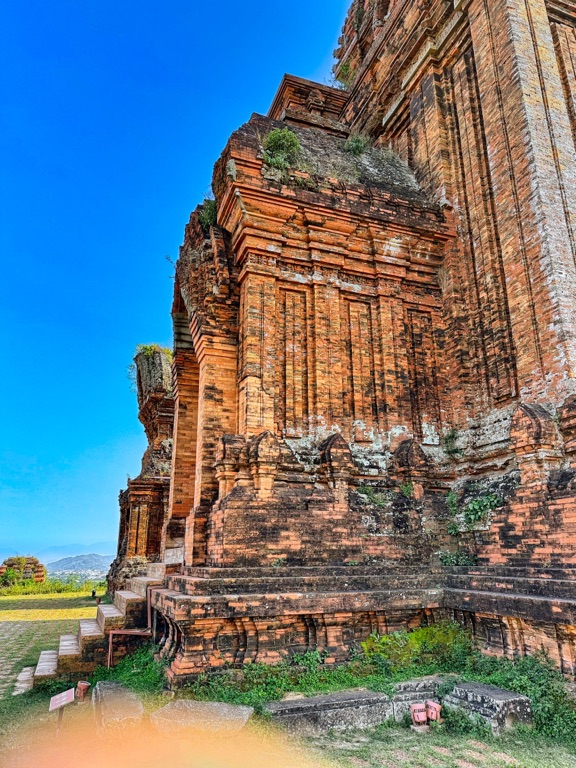
Theories and Interpretations
The purpose of the Banh It Towers has been interpreted through historical records and architectural analysis. They were primarily religious structures, serving as Hindu temples. The towers are thought to have been dedicated to the god Shiva, one of the principal deities in Hinduism. The presence of linga and yoni sculptures supports this theory.
There are mysteries surrounding the construction techniques of the towers. The precise brickwork without visible mortar has led some to speculate about lost construction methods of the Cham people. Theories suggest that the bricks may have been baked to specific dimensions and laid in a careful interlocking pattern.
The site’s alignment with astronomical events has also been a subject of interest. Some researchers believe that the towers were positioned to mark significant celestial occurrences, such as solstices or equinoxes. However, these theories require further evidence for confirmation.
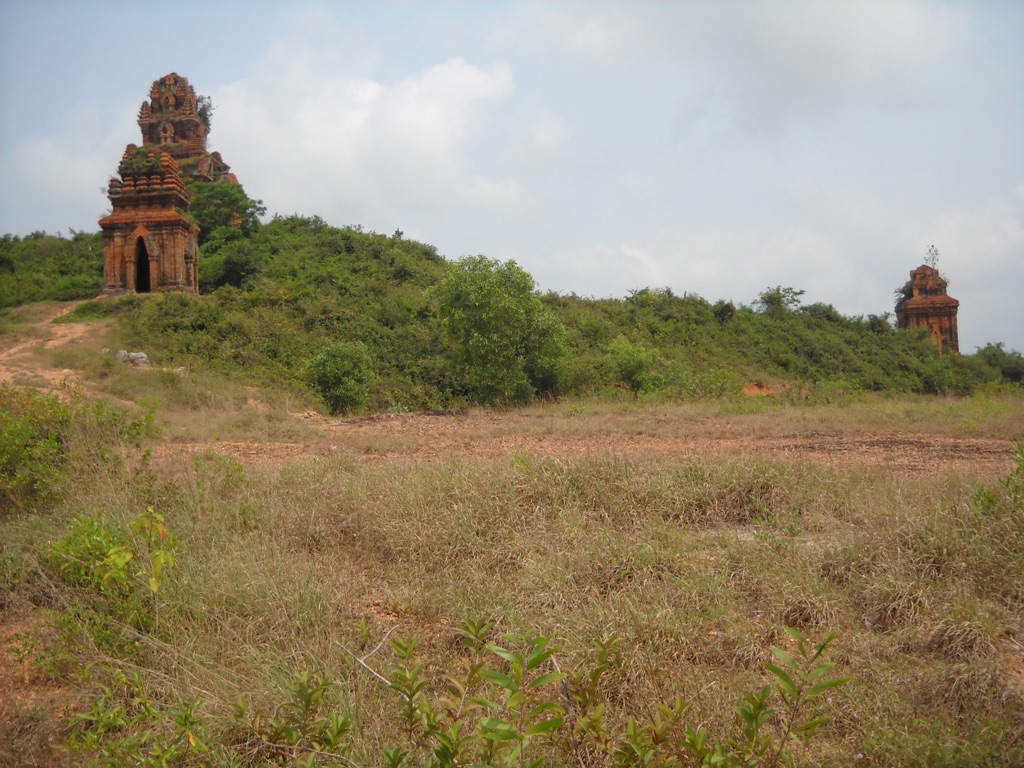
Dating of the Banh It Towers has been carried out through architectural style analysis and comparison with other Cham sites. Carbon dating has not been extensively used, as the primary construction material is brick, which poses challenges for this dating method. Instead, historical records and inscriptions have provided clues to the towers’ age.
Interpretations of the carvings and sculptures have been matched to historical records of the Champa Kingdom. These artworks provide insights into the religious practices and deities worshipped by the Cham people. The towers’ iconography is a rich source of information on the cultural and spiritual life of the civilization.
At a glance
Country: Vietnam
Civilization: Champa Civilization
Age: Approximately 11th century AD

